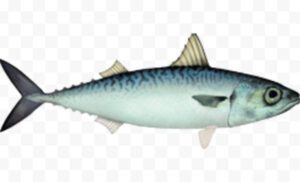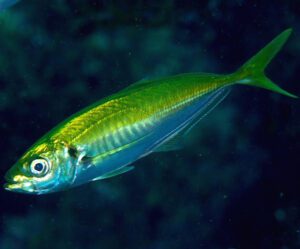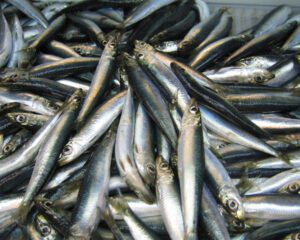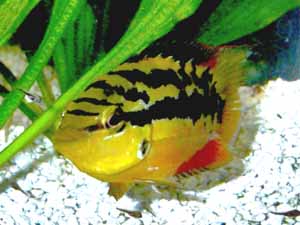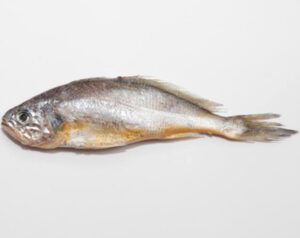The Atlantic Mackerel fish is a species of mackerel which is found in the temperate waters of the Mediterranean Sea, the Black Sea and the northern Atlantic Ocean.
It is extremely common in this area, and occurs in huge shoals in the pelagic zone down to about 200 m. The fish is also known by some other names such as Scottish Mackerel, Boston Mackerel, Norwegian Mackerel, Joey, Split or simply as Mackerel.
The Atlantic Mackerel fish spends the warmer months close to shore and near the ocean surface, appearing along the coast in spring and departing with the arrival of colder weather in the fall and winter months.
The fish migrates out into deeper and more southern water during the fall and winter (for seeking warmer temperatures). However read some more information about this fish species below.
Atlantic Mackerel Fish Characteristics
The Atlantic Mackerel fish has elongate body with long and pointed snout. Their main body coloration is steel-blue marked with wavy black lines dorsally and silvery-white ventrally.
They have 2 spiny dorsal fins, which are spaced far apart. They have 2 pectoral fins, and small caudal and anal fins which are also spaced far apart.
Their body tapers down to it’s body length, ending with a large tail fin. They have large eyes which are covered by an adipose eyelid.
Their teeth are small, sharp and conical. They have small scales over their body, with the exceptions of those immediately posterior to the head and around the pectoral fins. And these small scales give these fish a velvet-like feel.
Average body length of the mature Atlantic Mackerel fish is around 30 cm, with maximum recorded body length of 60 cm. And maximum recorded live body weight of the mature fish is 3.4 kg. Photo and info from Wikipedia.
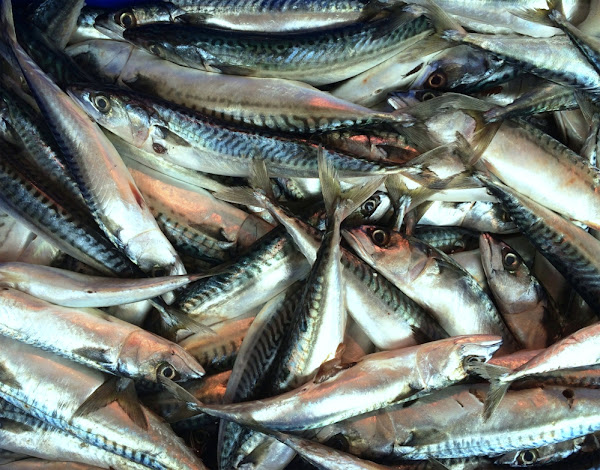
Diet
The Atlantic Mackerel fish are mainly feed on zooplankton and small fish.
Breeding
These fish generally become mature at their 2 or 3 years of age. They are batch spawner, and both of their eggs and larvae are pelagic.
A medium sized female generally lay between 200,000 and 450,000 eggs per season, and numbers of eggs increases with size.
Uses
The Atlantic Mackerel fish is mainly used for food. It is tasty and nutritious.
Special Notes
The Atlantic Mackerel fish is a highly commercial fish species. It is generally sought after for it’s meat, which is strong in flavor and high in oil content and omega-3 fatty acids among other nutrients.
The fish is generally sold fresh, smoked, salted, frozen, filleted or as steaks.
Average lifespan of the Atlantic Mackerel fish is around or up to 17 years.
It is a very popular fish species in some countries, and nearly 1 million tones are caught each year globally.
However, review full breed profile of this fish in the table below.
| Name | Atlantic Mackerel |
| Kingdom | Animalia |
| Phylum | Chordata |
| Class | Actinopterygii |
| Order | Perciformes |
| Family | Scombridae |
| Genus | Scomber |
| Species | S. scombrus |
| Binomial Name | Scomber scombrus |
| Other Names | Also known as Scottish Mackerel, Boston Mackerel, Norwegian Mackerel, Joey, Split or simply as Mackerel |
| Breed Purpose | Food |
| Special Notes | Very important species of fish, used mainly for food, highly commercial fish species, generally sold fresh, smoked, salted, frozen, filleted or as steaks |
| Weight | Maximum recorded weight is 3.4 kg |
| Breeding Method | Natural |
| Climate Tolerance | Native climates |
| Body Color | Steel-blue marked with wavy black lines dorsally and silvery-white ventrally |
| Rarity | Common |
| Availability | Europe, Mediterranean |

